This is the fourth in a series of interviews with regular Glasstire contributors. Not only does it seem right to show off the talent behind this magazine (because really, our writers keep us going), but this series provides an opportunity for you, our readers, to learn more about our writers and their other endeavors. Because our writers are all doing many, many great things.
Leslie Moody Castro (LMC): Where do you live currently and where are you from?
Carris Adams (CA): I currently live in Fayetteville, Arkansas, but I was born and raised in Dallas, Texas.
LMC: You also lived in Houston! When was that?
CA: I did! I moved to the Houston area in late 2019. Although the pandemic hit a few months after I moved, I still had a great time in HTX for the time that I was there until I moved to Arkansas in late 2022.
LMC: What are you reading currently?
CA: I am reading too many books! The main three I am making my way through right now are: Black Women Writers At Work, edited by Claudia Tate, The Sympathizer by Viet Thanh Nguyen, and Aftermath by Levar Burton (I love Levar Burton).
LMC: Levar Burton of Reading Rainbow and Star Trek? I had no idea he is also a writer! I’m adding his work to my list as well! Do you usually read three books at a time? I know you’re an avid reader — how do you decide what to pick up?
CA: Yes! Lt. Commander La Forge (Burton’s Star Trek character) is also a writer. I am always, for better or worse, reading multiple books at one time. Whether I finish them is a different story. I decide to pick up a book purely based on interest and feeling. Right now, I want to get lost in a world, story, or process unlike my own, whether that is in the past or the imagined future.
LMC: What inspired you to start writing?
CA: I started writing about art and artists in undergrad at The University of Texas at Austin, through various student-led initiatives that ultimately failed because we were broke and tired undergrads. After graduate school at the University of Chicago, I made a deal with myself to stay engaged in art by whatever means necessary, both inside and outside the studio. This took many forms over the years like podcast projects, writing, teaching, consulting, etc. All in all, I have great friends, peers, and mentors that believe in me and my work, as well as in my ability to write. And here we are!
LMC: You also have a day job. What do you do outside of contributing to Glasstire and how, if at all, does that shape your perspective on art?
CA: Oh the day job! I do a few things. On top of making paintings and drawings, I work for Mid-America Arts Alliance (M-AAA) as a Professional Development Specialist in the Organizational Services Department. We work with arts and cultural nonprofits and their leaders to help them maintain stability in areas such as governance, finance, fundraising, community outreach, etc. M-AAA is a nonprofit based in Kansas City, Missouri that serves Arkansas, Kansas, Missouri, Nebraska, Oklahoma, and Texas.
Additionally, I am the Visiting Assistant Professor in Painting and Drawing at The University of Arkansas at Fayetteville. These positions keep me engaged in the multiple arenas of art, creativity, and education, outside of the studio. They keep me abreast to the changing wants and needs of artists, creative communities, funding changes, programming, etc. Working in these fields has definitely shaped my perspective on how nonprofits, institutions of education, funders, and the government support art, as well as when they choose to support it, how, and why.
LMC: I think inquiring minds would be interested in some of the things you have learned in terms of artistic support and why. Can you share a little more?
CA: Where do I begin? First, I’ll say that everything with art, support, and money is way more layered than people realize. There are many people who believe in the arts and want to support artists any way they can. I work with them everyday! However for many organizations, individuals, and funders, the support is limited to what is feasible in that fiscal year, with the money and resources they have budgeted toward creative support. These folks want to support the work and they don’t care what school you graduated from or if you are represented by a gallery. They want to make your dreams come true, but they are limited in their capacity. Many times, these are your local nonprofits, local supporters, state arts agencies, and regional arts agencies.
On the other hand, there are entities that only support creatives as much as it validates them at the time. And the art world has the same problems as any other business minus regulation. So anyone who lists that they have a grant for application is a funder, supporter, etc. We’ve all seen them. A gallery, the artist directory systems, some residencies including artist-run residencies, online prizes, various nonprofits etc. They all qualify as a kind of funder. They want to appear as if they understand the field; they have all the jargon and cool branding, but give opportunities to the same ol’ same ol’ and whoever is “hot” on the market. They say they support emerging artists, but rarely give money to truly emerging artists. And perhaps the issue is that there is no single definition for “emerging.” The income they make from these application fees alone are tens of thousands of dollars by promoting an opportunity that they don’t actually support. And they will more than likely fund the artist that has shown internationally (but not too much), has gallery representation, has already received multiple awards, and has ample press. This is where support becomes about proximity, access (not accessibility), image, and promotion of them (the funder).
If these first learnings are two ends of a very long spectrum, the most dangerous is the funder, organization, or individual that exists in the middle. They want to support and they care deeply about being seen. They flip-flop like a pancake. You can’t gauge their intentions and you can never quite trust them, yet we are always watching them to tell us, what is valuable. In all honesty, this is where some of your museums and academic institutions tend to exist. They are always in the middle, always beholden to unseen leadership demands, the state, budget numbers, boards members, the political climate, etc. They will kiss whatever ring they have to in the moment.
So the question becomes, how do we as artists engage in these systems? For me, you use them as much as they use you. Again, it’s very layered and not black and white at all. And of course, these are just my opinions.
LMC: I know you can talk about funding for hours, but I want to get back to you! What do you think makes for a great studio visit with an artist?
CA: Oooh good question. First, I think people underestimate the power of research before the studio visit. There is nothing like having someone in your studio who has shown genuine interest in you and your work before walking through the door and is asking 100 questions. Research does not negate experiencing the work. Second, I think it is important that you do not go into someone’s studio with the idea that you can make their work better. Its egotistical and selfish.
I’ve had a few studio visits (particularly with cismen) where they thought that I didn’t understand the decisions I made or what my work was about. Thus the studio visit felt like labor and a colossal waste of time. You should enter someone’s studio to learn about them and their work. Perhaps you have something to offer, perhaps the artist has something to offer you or neither. A studio visit is an opportunity for exchange. And lastly, I am very particular about who I allow in my studio. It is a sacred space and not for everybody or anybody. That being said, as a visitor into someone’s sacred space, you should act accordingly. Come correct or do not come at all.
LMC: I couldn’t agree more! I always ask before giving advice/feedback and only if the artist is looking for it. What’s coming up on the horizon for you?
CA: On the horizon for me is rest! I made myself a promise to reset every June. So my dog and I have been chillin’. After June, I have to get to work! I am in two group shows this summer and I have three solo shows happening in the fall and winter, two of which are in Houston! I can’t wait to come back.


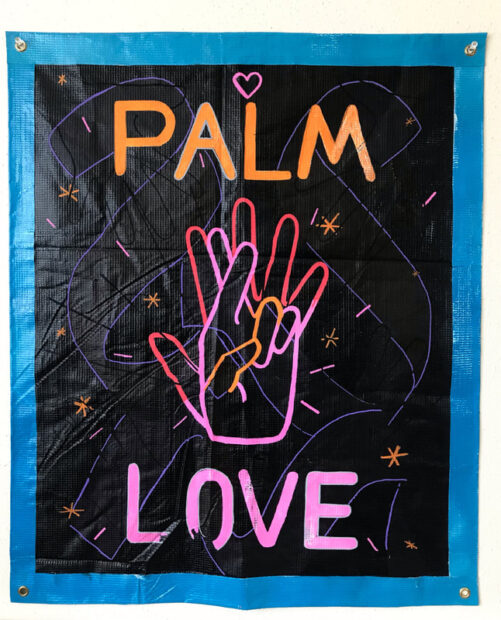
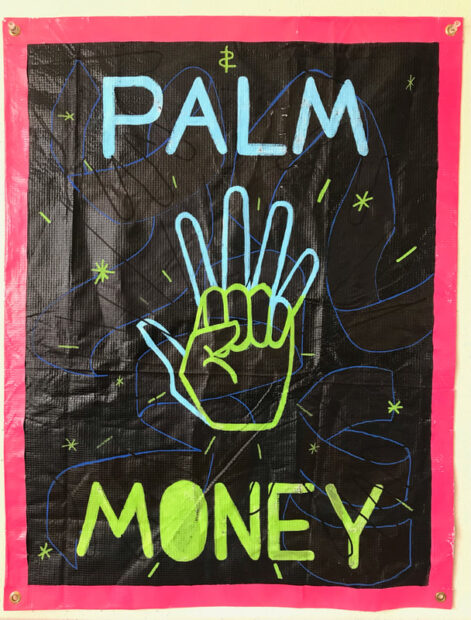
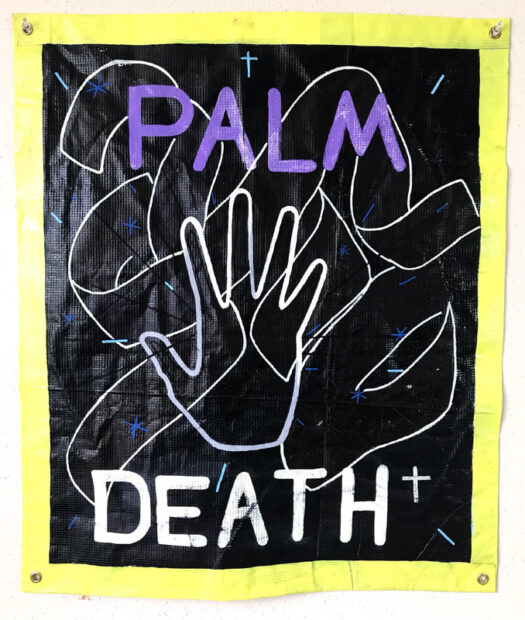
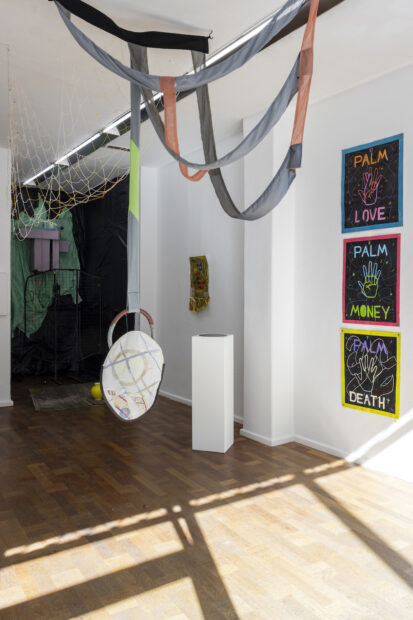
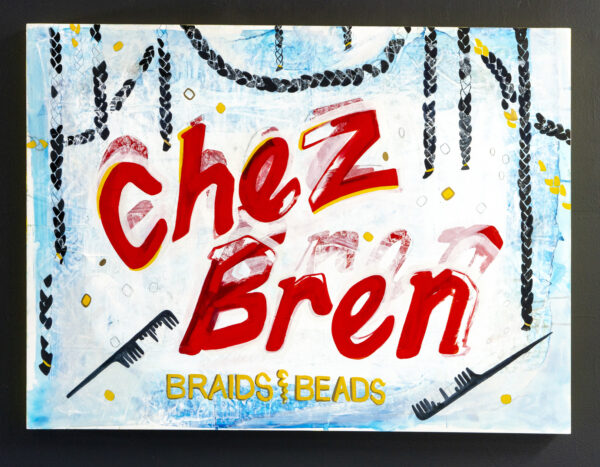
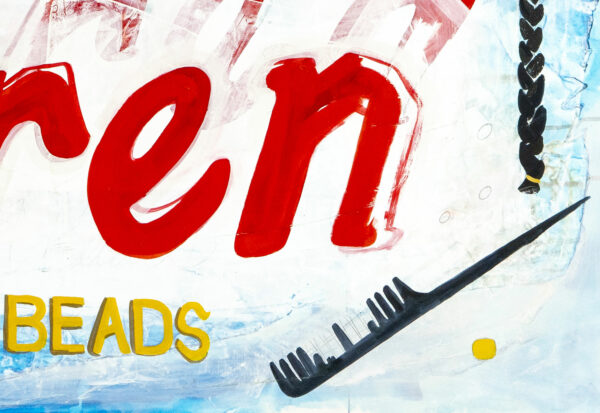
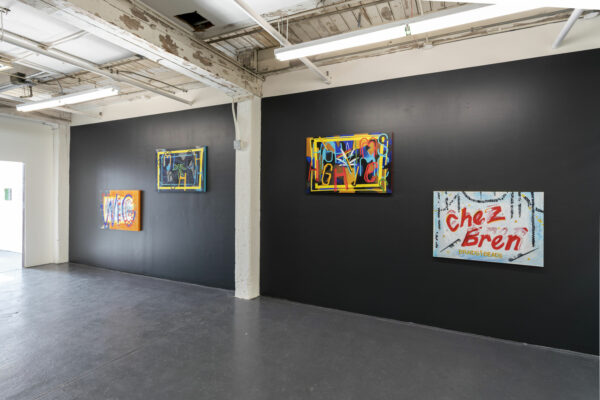

1 comment
I am so happy to read this! I have fond memories of meeting Adams in Chicago (2017?) at TSA Chicago! Best wishes Carris!